Developer: Irem Publisher: Irem Release: 09/90 Genre: Puzzle
In my mind R-Type is what I always associate with Irem. It is no secret why; R-Type is one of the most influential shooters of all time. But that one seminal game did tend to overshadow a lot of their other works. On the NES alone they released many underrated classics. Metal Storm is one of the greatest NES games of all time in my opinion but also on that list would be Kickle Cubicle. This arcade port is truly excellent with solid mechanics and brilliant puzzle design.
Originally released in the arcade in 1988 Kickle Cubicle tells the tale of the fantasy kingdom. One day Kickle wakes up to find the Fantasy Kingdom completely frozen in ice by the Wicked Wizard King. As the only one unaffected Kickle must rescue its citizens who have been imprisoned in dream bags and save the kingdom.
Games like Kickle Cubicle are why I miss video game publications so much. I was raised on a steady diet of platformers and side scrolling action games and gave most other genres little thought. Eventually I would expand my horizons like most and become a more well rounded gamer. The Nintendo Power article on Kickle Cubicle was enough to convince me to give it a try and I loved it. That budding interest in puzzle games would carry over to games like Mendel Palace, Fire and Ice and the Adventures of Lolo. Kickle Cubicle has a low profile but deserves better.
The mechanics of the game are pretty simple. Kickle can breathe ice that can freeze enemies in their tracks or turn them into ice blocks. These ice blocks can then be kicked, smashing enemies in the process or turning into a platform when sunk in water. Blocks are temporary; eventually the enemy will thaw unless you kick them. He can also create an ice pillar to block enemies or stop kicked objects. There are no power-ups aside from extra lives because they are not necessary. The play mechanics you start with are perfectly adequate.
The excellent level design backs the solid mechanics. The object of every stage is to collect the three dream bags within the generous time limit. Most levels involve manipulating the blue noggles to create bridges to collect all of the dream bags. This simple task is complicated by any number of objects; water holes cannot be filled while varying terrain requires different approaches. Aside from noggles there are eleven other enemies with their own behavior. Max is a bird who can kick your blocks and break your pillars to keep pursuit. Shades possess your abilities and need to be dealt with differently. While you want to avoid them sometimes you need to trick them into helping you complete certain levels!
Each land features new objects and enemies to interact with to achieve your goal. Cannons relentlessly fire in your direction. Hammers swing around and can take out enemies or punt ice blocks. Springs….are self-explanatory. Their arrangements become incredibly complex later and I’ll admit to looking at a faq once or twice. Each land has a boss battle, a bit uncommon for the genre. While novel these fights are simple and you would lose nothing if they were removed.
Next to its mechanics the game’s pacing is also excellent. Each land has 15-20 individual levels. For the most part these increase in difficulty but there are plenty of simpler puzzles to break it up. It is almost as if the designers are apologizing after putting you through the ringer with a particular head scratcher. I like it. As much as I appreciate escalating difficulty in puzzle games it can be overbearing at times. An easy gimme puzzle not only motivates you to keep going but also helps you recharge. The introduction of new enemies and objects in each level helps avoid repetition although I will admit each land could be a little shorter. That is not an indictment on the game; just my personal feeling.
There are some significant differences between the Japanese and American versions of the game that really affect the game’s flow. The most profound is the stage order; the US version has a set order to each world. The Eastern version allows you to tackle all four worlds in any order. It is a major change although I will say Irem did a good job of aligning them from easiest to hardest. While I would have liked that freedom to tackle the game as I please it really only benefits players who are already familiar with the game.
The other would be the difficulty. There are fewer enemies populating each individual level. The puzzles alone can be intimidating as is; adding more enemies in the mix just seems cruel. Taking a quick glance at the Japanese version it really is insane how many enemies they pack in the later areas. In most cases it is usually just one more but that is enough to add more tension to each puzzle. I like the balance struck in the western version. There are enough enemies that you need to be alert but can also afford to spend time working out each solution. But that’s just my opinion.
In Closing
Highly underrated but excellent regardless Kickle Cubicle excels due to brilliant design & solid mechanics. The NES library has a wealth of riches in nearly every genre and Kickle Cubicle is one of its best. Those that take a chance on a different title will find a satisfying adventure that will challenge but not frustrate. Give your brain a work with this hidden gem.


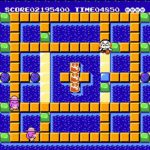
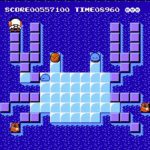
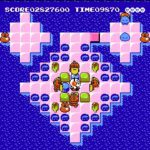
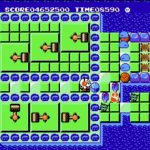
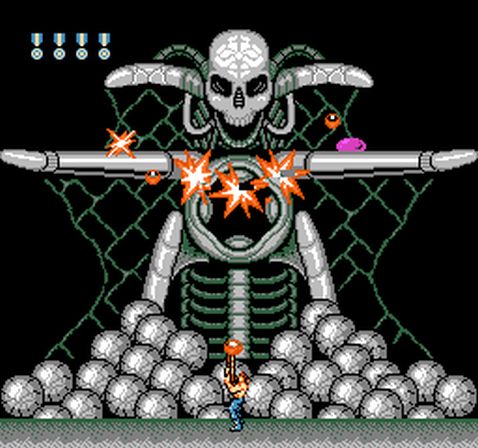
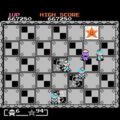
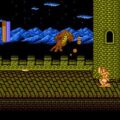
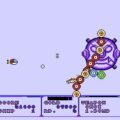
One thought on “Kickle Cubicle”